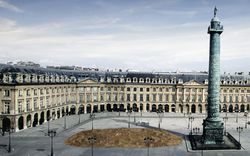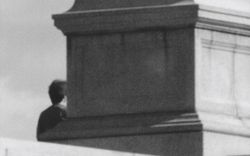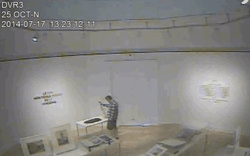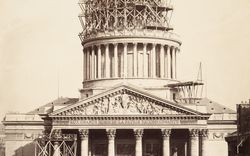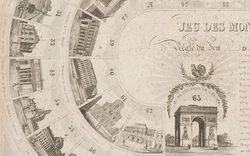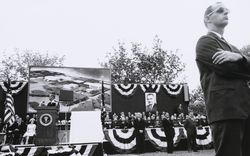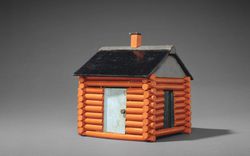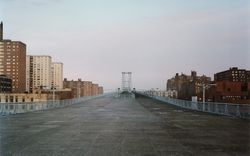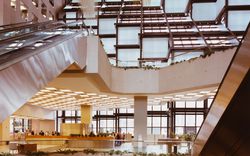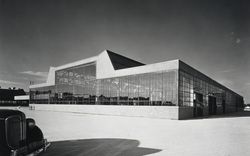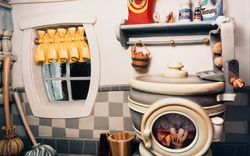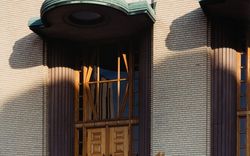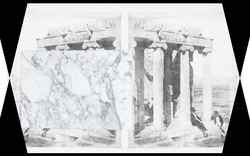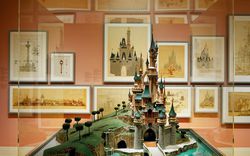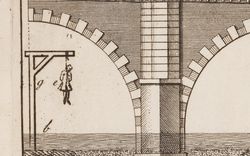Classigraphy
Video and text by Mika Savela
I ❤ Palladio.
Recently, many places—school projects, Tumblrs, work by young designers—have started showing evidence of an interest in monuments, stones, arches, colours, and gold, something that hasn’t really been seen since Milan’s disco days, or peak Michael Graves. There are suddenly casual references to Sottsass and Bramante. Palladian villas and triangles have become relevant for the contemporary search for the fundamentals of architecture. Exhibitions, publications, illustrations, collections, mouldings, period rooms, villas, and old-world objects appear together in abstracted and digitalized grids along with wireframe cathedrals, checkerboard patterns, and CNC-ed marble busts. Is this interest merely superficial, guided by aesthetics and admiration for craftsmanship that seems unattainable today? Or are we actually developing a new relationship with history?
Architecture—at least in the Western world—is bound to the imagery and etymology of the classical. Almost every building, room, space, and fixture carries some element that invokes a historical reference. Columns, friezes, and abacuses routinely appear as motifs and illustrations for Baukunst, the “building art.” In many cities, traditional public functions are demarcated by designs that follow the classical orders, or at least abstractions of them. The repeated, ornately modified heritage of ancient Greek and Roman forms and material palettes was solidified by neoclassicism as the main tool for monumentalizing and eternalizing symbolic power in established societies. Golden serif letters on stone plates are meant to last forever. And orderly rows of pilotis and polished marble slabs define even the most modernist designs as inheritors of the history of architecture.
When postmodernists revived interest in the visual and spatial arrangements of the classical, they began with the reintroduction of geometric shapes and with a radical notion of playing with old culture in a new world. Perhaps, at the time, this came as both a surprise and a relief, a license to operate beyond the modernist dogma. While, in the North American context, the postmodern had a strong commercial turn, in the Mediterranean region, the “original” classical was always present. (The Strada Novissima was never totally out of place in Venice.) Materials documenting the postmodern era, such as Terrazzo magazine (1988–1995), were as much about imposing new visual ownership over historical subjects in architecture as they were authentically inspired by the presence of the classical world. Perhaps they were always about playing on eternity and luxuriousness in the context of the brutality and banality of the contemporary world.
It may be unnecessary to point out how our visual interests can lead us in endless circles; nevertheless, today there is another new enthusiasm for certain aspects of the classical. On one hand, classigraphy, as a contemporary interest, is fueled by the renaissance of the drawing and the etching, and by visual symmetry. It references baroque gardens, mansions, palaces, layouts of old books, and lithography—and their archival remains. On the other hand, classigraphy shows new boldness in referencing the classical in all its incarnations, be they historical, neoclassical, or postmodern. It also draws from the joy of rediscovering past visual experiments like Terrazzo and Advertisements for Architecture.
But so far these developments have mostly taken place on a discursive level in design culture. Classical columns have not made their way back into contemporary architecture as elements of serious built projects. Does this self-imposed limitation perpetuate the taboo of going postmodern? Or is it canny and economical—a product of the current generation’s reconsidering of the classical as an integral part of the history of architecture in the European tradition, and their decision to reuse it in whichever way appears interesting? Classigraphy suggests a rediscovery of a more profound beauty, something beyond the material culture of gypsum boards and vinyl flooring. But are readings of the classical really available for all global contexts of architectural practice? Many of classigraphy’s visual references rely on monuments and displays of past wealth and power. Perhaps, in a future wider trajectory, these references can become built examples of the ways we de-sanctify or de-canonize the imagery of the past, putting it all in a visual pantheon available for use.
Mika Savela produced this video and text in 2017 as part of a research project entitled “Offness.” This work is the result of the multidisciplinary research program “Architecture and/for Photography” developed by the CCA, with the generous support of the Andrew W. Mellon Foundation.
